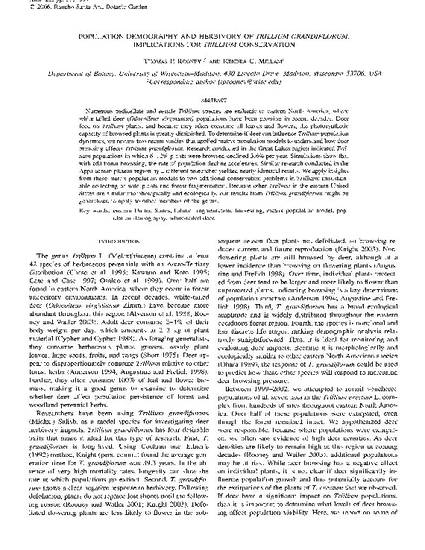
Numerous pedicellate and sessile Trillium species are endemic to eastern North America, where white-tailed deer (Odocoileus virginianus) populations have been growing in recent decades. Deer feed on Trillium plants, and because they often consume all leaves and flowers, the photosynthetic capacity of browsed plants is greatly diminished. To determine if deer can influence Trillium population dynamics, we review two recent studies that applied matrix population models to understand how deer browsing affects Trillium grandijlorum. Research conducted in the Great Lakes region indicated Trillium populations in which 6-12% plants were browsed declined 3.6% per year. Simulations show that with additional browsing, the rate of population decline accelerates. Similar research conducted in the Appalachian plateau region by a different researcher yielded nearly identical results. We apply insights from these matrix population models to two additional conservation problems in Trillium: unsustainable collecting of wild plants and forest fragmentation. Because other Trillium in the eastern United States are similar morphologically and ecologically, our results from Trillium grandiflorum might be generalized to apply to other members of the genus.
Available at: http://works.bepress.com/thomas_rooney/116/
